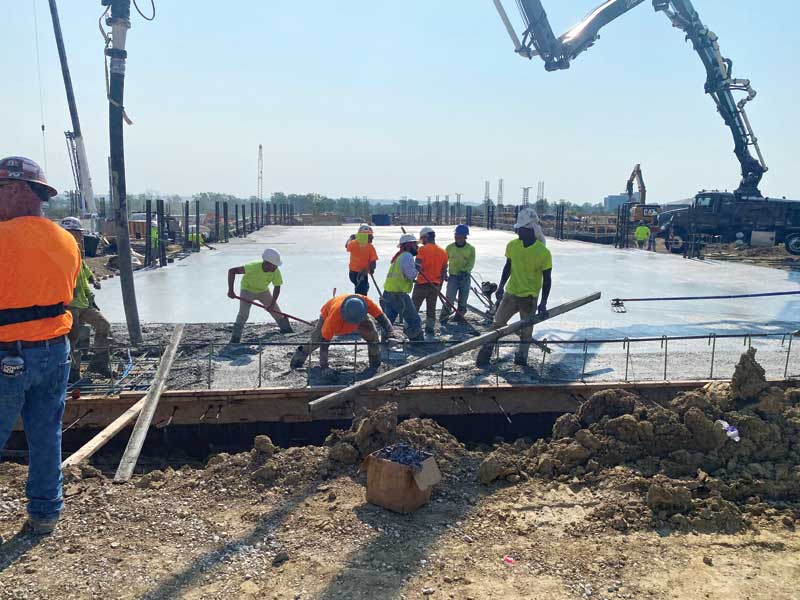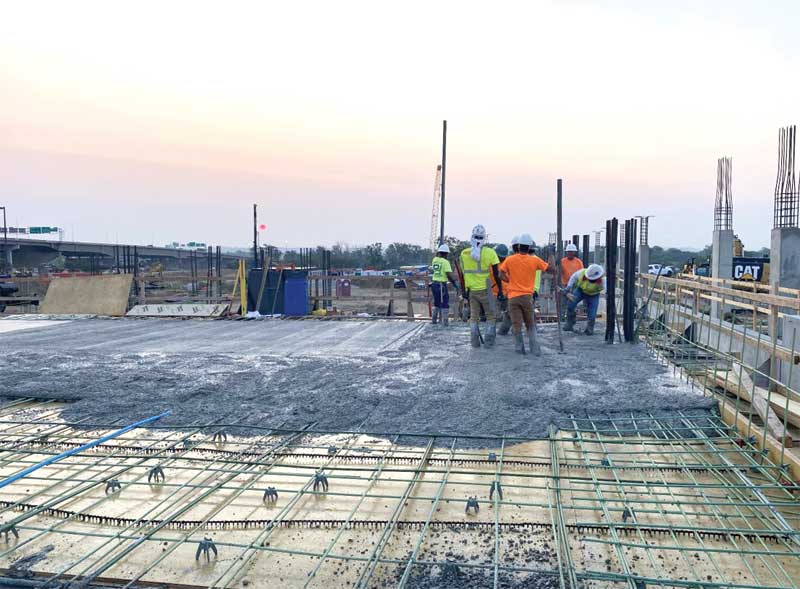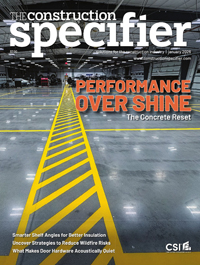Specifying corrosion inhibiting admixtures for concrete structures
The reference to ASTM C1582 brings up a good point; it is the most widely accepted standard for qualifying a corrosion inhibiting admixture. This benchmark requires that a corrosion inhibiting admixture pass either ASTM G109, a multi-year test, or ASTM G180, a three-day test, in order to be considered a chloride corrosion inhibiting admixture. While some experts feel there is room for improvement on how well these tests simulate actual corrosion and protective mechanisms in concrete, it is an important baseline to start the screening process until more relevant standards can be designed and implemented. The types of admixtures currently recognized as commercially available corrosion inhibitors in ACI 212.3R-16 are amine carboxylates, calcium nitrite (Ca[NO2]2), and amine esters.5 Their elaborate definitions in the ACI document can be summarized as follows:
- Amine carboxylates: Mixed inhibitors that adsorb onto metal and create a hydrophobic protective layer that protects against anodic and cathodic corrosion reactions.6
- Calcium nitrite: An inhibitor that raises the chloride threshold by reacting with the anode of the corrosion cell.7
- Amine esters: Pore-blocking elements that form
a protective film on metal surfaces.8
What are the key differentiators and factors among admixtures?
Some characteristics to look at include biobased content, dosage rate, impact on set time and air content, acceptability for potable water certification, performance after cracking, and the ability to inhibit corrosion caused by both carbonation and chlorides. ACI 212 covers many of these factors and is a good reference to consult for additional information after reviewing the basics covered below.
Calcium nitrite
Calcium nitrites (CNI) are perhaps the oldest corrosion inhibiting admixtures in existence. These raise the chloride threshold and therefore must be dosed according to expected chloride loading. The higher the expected chloride content, the higher the dose.9 This chloride threshold mechanism also means calcium nitrite is suitable for chloride-induced corrosion, but not for carbonation-induced corrosion. Calcium nitrite is a set accelerator, which poses challenges for high temperature pours. It does not have biobased content or NSF/ANSI 61 certification.
Amine carboxylates
A key advantage of amine carboxylates is that they are dosed independently of chloride concentration—they have one of the lowest doses at 0.6 to 1 L/m³ (1 to 1.5 pt/yd³). Another important feature is amine carboxylates do not accelerate set time, fostering good workability especially when pouring concrete in the middle of a heatwave. They often contain a percentage of renewable content. To date, the only corrosion inhibiting admixture on the market that is a United States Department of Agriculture (USDA) Certified Biobased Product comprises amine carboxylate chemistry.10 The use of biobased content can help projects earn credit toward Leadership in Energy and Environmental Design (LEED) certification, so this aspect is especially attractive to those considering sustainable construction.












